The incredible logistics behind Bathurst’s TV
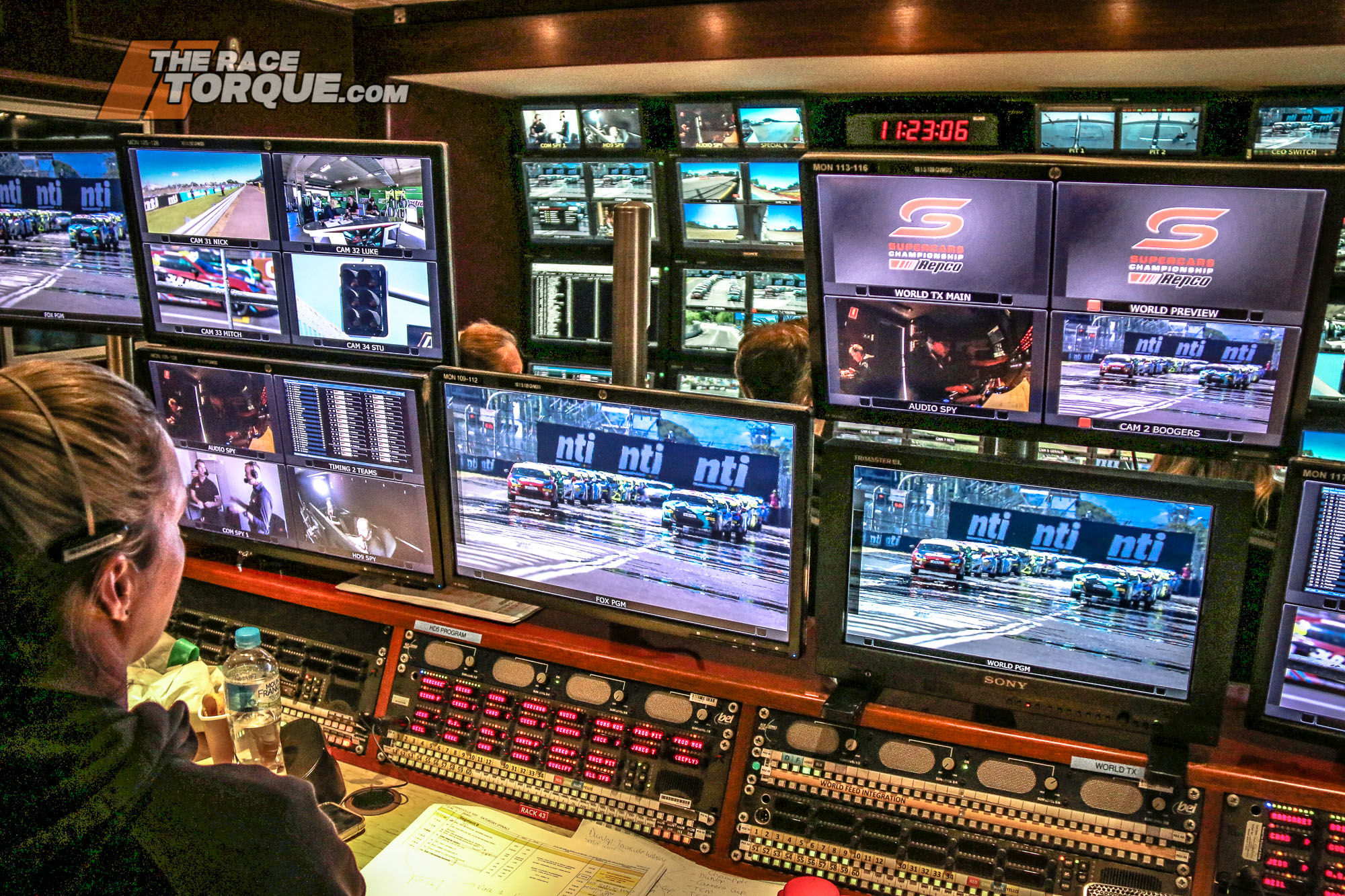
NEXT WEEK somewhere between 1.6 and 2 million people will spend six hours of an October Sunday watching what is the most watched domestic car race in the world, per capita.
The Repco Bathurst 1000s position as one of the world’s greatest and most influential races is unquestionable, but its position within the Australian national psyche – where sport ranks somewhere between ‘breathing’ and ‘eating’ – is like no other major motorsport event in the world.
Perhaps outside of Ashes or Australia-versus-India test matches, the 1000 has the largest sustained domestic TV audience of any sporting event in Australia.
While a Grand Final goes for two hours and the Melbourne Cup for two minutes, Bathurst is a six hour marathon by comparison. It’s enormous.
And behind the scenes, it’s also one of the most impressive TV productions you’re ever likely to see.
Think of a four-day test match but on a field six kilometres across, where it can be raining on one side and sunny on the other and you can leave one day with everything working fine to arrive the next to find that an errant Cow has trodden on some cabling – somewhere amidst the nearly 40km of it.
It’s a logistical exercise that the 73-page Production Manual issued by Supercars to staff, crew and talent only barely puts into perspective.
Thanks to Supercars Media, The Race Torque has been able to delve into some of the raw numbers and resources that go into the largest motorsport broadcast in the Southern Hemisphere, one of the largest sporting broadcasts in Australia and a technical and human feat of engineering and skill that is rarely appreciated outside of those who work on it.
And that’s a good thing – if you’re not thinking about the technology and people behind it, it generally means the broadcast is going smoothly.
Here’s some of the incredible numbers behind the Repco Bathurst 1000 coverage that you’ll watch on Fox Spots, Kayo, the Seven Network, SuperView and other outlets all around the world next week.
PEOPLE POWER:
The Supercars Production Manual for Bathurst lists 241 people in an array of different positions and skillsets.
The key people? Well, they are all critical to the broadcast functioning, but remarkably, at Supercars there are only 12 people who work full-time on the broadcast from their North Sydney office, and some core regulars who join the team at each event.
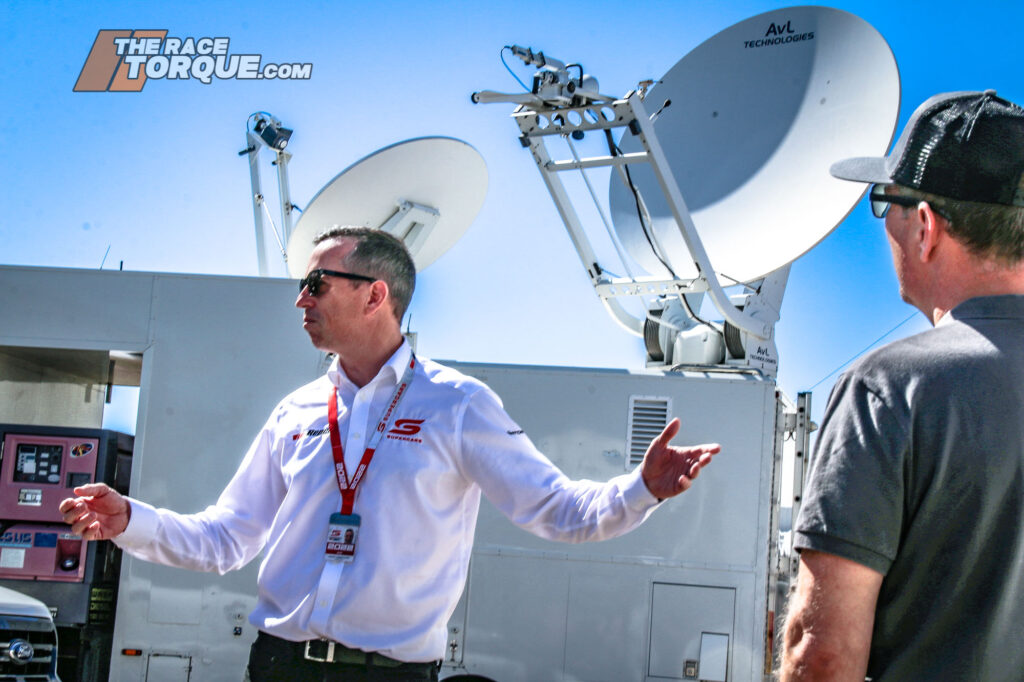
There’s Head of Broadcast David Tunnicliffe, who steers the ship. He’s ably supported by Carl Iannelli, who is the head of Business and Operations and manages the day-to-day of it all.
Angela Rampal is the Senior Producer, who ties it all together and is in the ears of the on-air talent throughout, guiding the precious rundown, the daily bible on which the entire broadcast is based.
Brian Forshaw is the Director – he’s the one that calls the shots on what camera to cut to, and when to do it.
Next to Brian in the truck is Michelle Wildon, who switches between the various cameras on his direction, and Margaret Suleau, who is the calm voice counting the entire show in and out of breaks, segments and everything else that happens to a specific time.
There’s producers like Briony Ingerson who tie all the stories and content together, Emma Debney who wrangles the pit lane reporters and is their route of communication to the truck, and Michael Heaton, who somehow manages to wrangle Mark Larkham into not spending 30 minutes talking about how good Fords are.
Full-timers Emily Clulow, Colin Balshaw and Andrew Lumb make things like the (always excellent – no pressure..) openers look incredible, and all the pre-packaged content that slots in seamlessly between the live racing.
Meanwhile, somehow Sam Musgrave, Jacqui O’Doherty, Rebecca Elder and Lisa Totani between them manage the crewing, transport, travel and logistics for such a large enterprise.
Between Fox Sports, the Seven Network and the commentary team there are 18 members of the on-air team this year, from hosts Jess Yates (Fox) and Mark Beretta and Mel McLaughlin (Seven) to the team in pit lane, those calling supports and those out in the field amidst the good people of the Mountain.
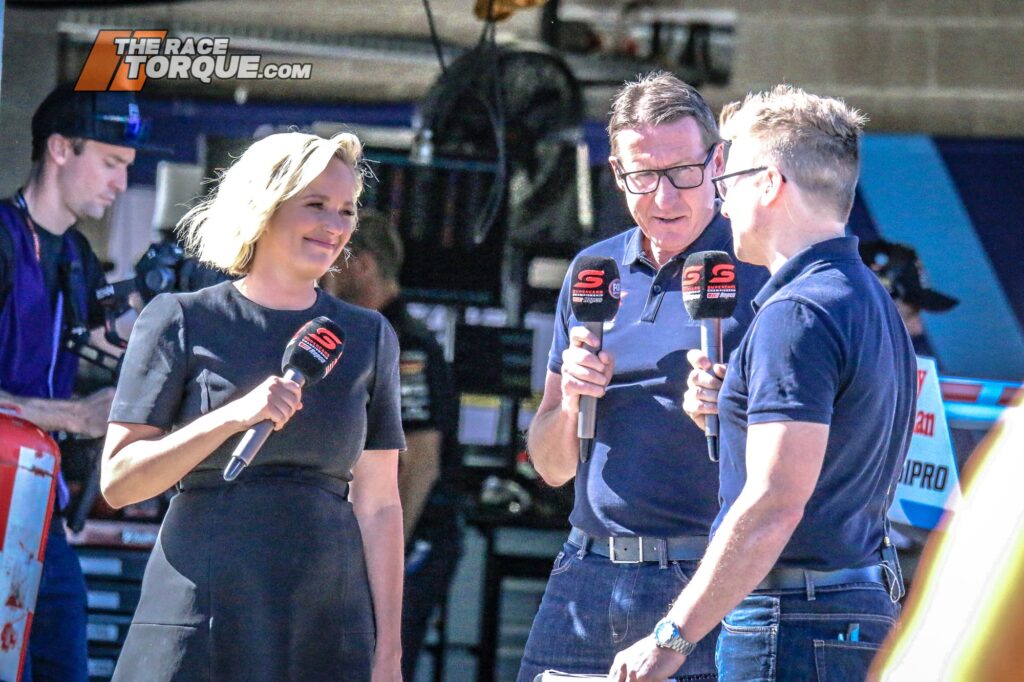
Beyond that there are nearly 200 contractors, weekend workers, supplier-provided experts and helpers that join the broadcast to make it all work.
Between Fox / Supercars and Seven’s own people there are 7 editors constantly cutting together the packages you see.
10 people work on the Graphics package, from supplier Girraphic. Four people, including two pilots, a technician and camera operator Adam Huddlestone will spend nine hours aloft in the helicopter between Saturday and Sunday getting some of the most incredible aerial shots in all of motorsport.
Despite the outrageous cost of fuel these days, there are exactly zero people who would argue that the chopper is not worth the investment for what it adds to the coverage – it’s part of the fabric of the race.
There are 33 camera operators around the circuit and a further six on the mobile RF cameras, covering pit lane, the paddock and any other areas.
Some camera operators have been at Bathurst forever – Ian O’Brien has been pointing a camera at racing cars on the Mountain since before Colour TV came to Australia!
14 people make the broadcast sound as good as it does from the Audio department. 15 people help to cue up the replays so you don’t miss a minute of action.
And so it goes on..
THE TECH
Four enormous Outside Broadcast units will deliver the action from the TV compound. HD5 is dedicated to filming the ‘world feed’ that fires out the images of the track and everything on it across four days.
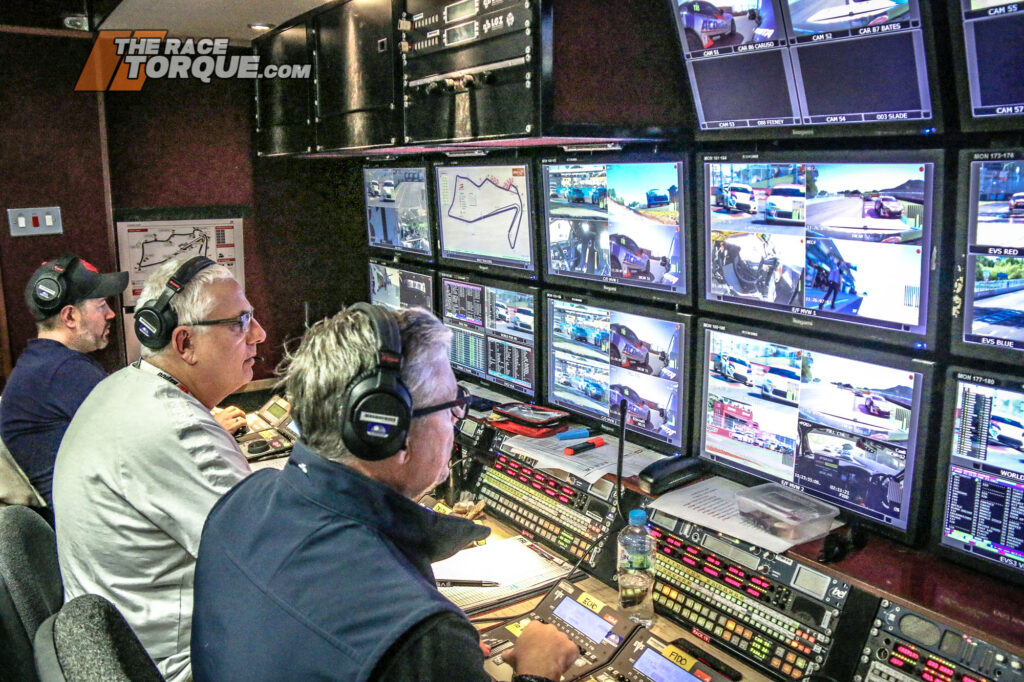
HD9 is dedicated to Fox Sports – so all the bits you see with Jess Yates and friends between all the sessions – while HD7 does the same for Channel 7’s broadcast which at Bathurst will feature separate talent linking between the on-track sessions.
Don’t forget there’s a separate group of people producing the big screen coverage around the track (On Sunday, with an audience of about 60,000 people, the Big Screen production becomes one of the more watched TV channels in New South Wales).
21 temporary scaffolds need to be erected to carry the manned cameras scattered around the circuit.
There are 18 manned camera positions around the Mountain, plus 10 fixed ‘Speed’ cameras scattered around the circuit – at the Cutting, The Metal Grate, McPhillamy, the Dipper, the exit of the Elbow and the entry to the Chase, of course.
Every car has four or more cameras – there’s another 100-plus feeds of vision that need to be monitored and switched.
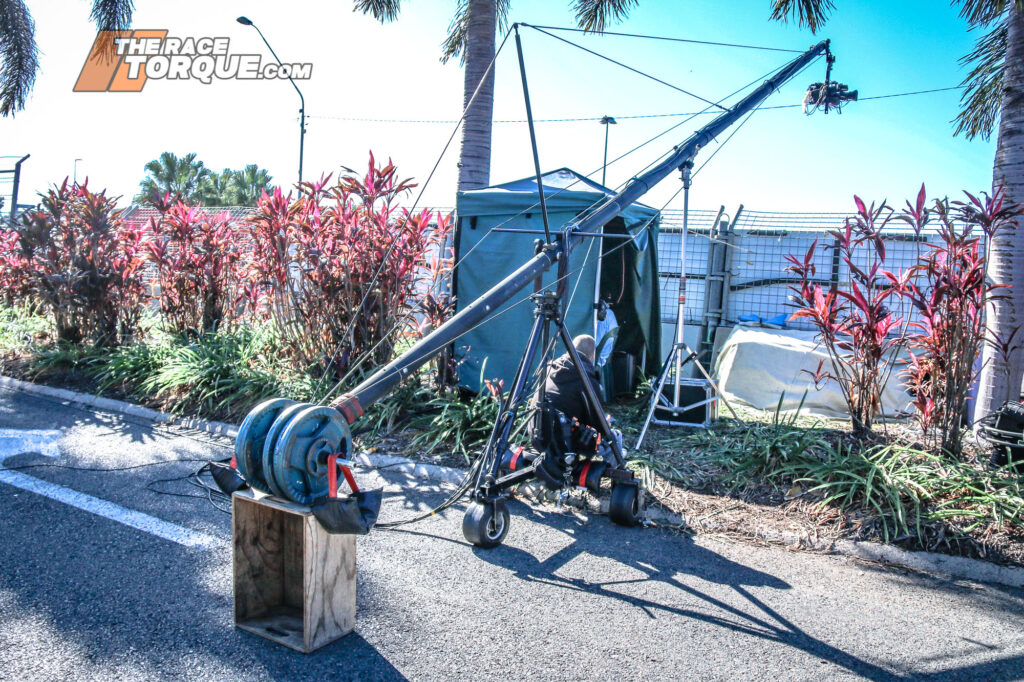
‘Dactylcam’ – flycam to you and I, but with a much cooler name – will stretch across the circuit from just after the kink at the Chase to the exit of Turn 22, opposite the Rydges resort, giving an incredible shot up Conrod and through the fastest corner in the sport and then onwards down to Murray’s.
Thers’s three boom cameras that give the sweeping shots of the circuit and the studio, 8 RF cameras on the shoulders of hardy camera operators, cameras in Race Control, on the podium, and the Commentary Box and two positioned in a pair of key team’s engineering stations, to get the instant reactions from the people behind the headsets.
Even Larko has his own sneaky ‘Scope’ camera to pry into all of the areas the teams don’t want him to be.
In total there’s neatly 200 cameras capturing the action this weekend.
THE LOGISTICS
Of course, the next challenge is how do you sort the logistics for such a large group of people?
Well, it takes nearly 40 hotel rooms, 55 rental houses and 51 rental cars to accommodate the crew – keeping in mind a lot come from New South Wales or even further afield in their own wheels.
It’s there you see the real impact of the Bathurst 1000 to the city; you don’t need to be a rocket scientist to work out what renting 55 houses at an average of something like $5000 a pop delivers into the local economy.. and that’s just the TV department, it doesn’t even cover Motorsport operations, the teams, the media, officials and the paying punters.
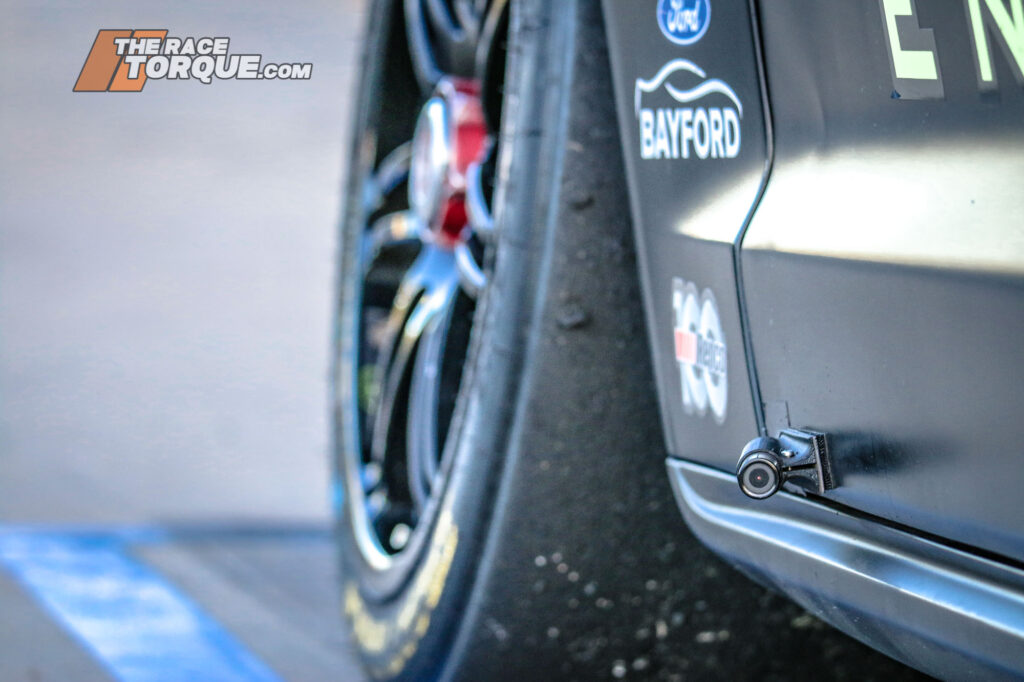
The build started on September 25th – two weeks out from the race – with the Scaffold build while Saturday 1 October is the day that the setup proper commences, with the rig crew commencing the enormous task of setting up.. well.. everything.
Officially, the setup is handed over to the Production at 2:30 on Wednesday, 5th October. Less than 15 hours later, they’re live to the world.
From there, the broadcast is live for 10 hours and 35 minutes on Thursday, 11 hours on Friday, 10 hours 20 minutes on Saturday and a mammoth 11 hours 45 minutes on Sunday. That’s nearly 44 hours in four days live on Fox and Kayo alone.
Seven are live for 25 and a half hours in their own right and the big screen coverage is up for the same as what you’ll see on Fox – all totalled it’s more than 110 hours of live TV. And you won’t want to miss a second.







